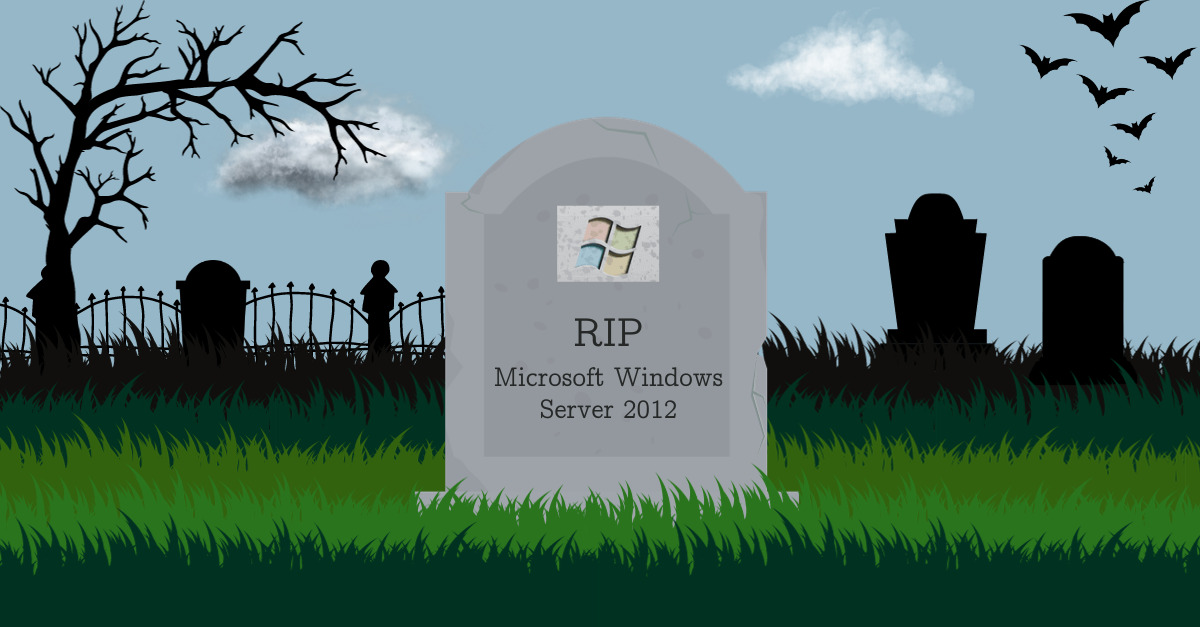Don’t Let Your End-of-Life 2012 Servers Haunt You this Halloween

As the ghosts and goblins make their annual appearance, it’s crucial to ensure that your practice remains safe and secure. While you’ve been busy decorating your home and stocking up on candy, a true horror story could be playing out at your practice that you may not even be aware of… your Microsoft Server Operating Systems could be out-of-date.
As your trusted technology partner, we want to make sure you are aware of this rather scary situation. Effective October 10, 2023, Microsoft Windows Server 2012/2012 R2 support has come to an end.
These outdated software’s may seem harmless, but their implications are scarier than any ghost story you’ve heard and are sure to send shivers down the spines of even the most seasoned IT professionals.
First, let’s talk about security, the cornerstone of any IT infrastructure. An end-of-life (EOL) 2012 server is like an open invitation to malicious entities lurking in the digital shadows. With Microsoft and other software vendors no longer providing security updates, patches, or bug fixes for these aging servers, they become prime targets for hackers. Just like a haunted house, these servers are full of vulnerabilities waiting to be exploited.
Imagine the horror of a data breach, exposing sensitive information and violating compliance regulations. With Halloween-themed cyberattacks like “Phantom Phishing” and “Spectral Ransomware” on the rise, maintaining an EOL server is like offering your data up as candy during Trick-or-Treat.
For more in-depth information on the consequences of running an EOL server, be sure to sign up for our webinar here.
Next up is compliance. Regulatory requirements continue to evolve, and EOL servers don’t stand a ghost of a chance in meeting these demands. HIPAA, GDPR, and many other data protection regulations require up-to-date security measures. Running an EOL server puts you in the crosshairs of compliance auditors who are more frightening than any monster under your bed.
If that still isn’t enough to scare you, think of your technical support options. When you’re dealing with an EOL server, there’s no one to call when things go bump in the night. Microsoft and other vendors are unable to provide technical support as no security patches, bug fixes, or troubleshooting can be applied to these systems. And when problems arise, it’s not a matter of if, but when, you’ll find yourself in a terrifying tech nightmare.
Bottom line, running an EOL 2012 server is putting your practice and patients at risk. When your server is unreliable, your end users and patients can suffer. Imagine a doctor unable to access critical patient records in an emergency, or your intake staff unable to input critical patient information regarding their health history and medications. The fact is, EOL servers are plagued by performance issues. As software and hardware evolve, these old servers struggle to keep up. They slow down like a zombie with a limp, causing productivity to plummet. The unstable environment an EOL server creates can have detrimental real-life consequences.
This Halloween, instead of encountering these IT horrors, consider migrating to a supported server infrastructure. Protect your data, maintain compliance, and ensure a stable, high-performance environment to enhance the end-user experience and, in some cases, even save lives.
As always, DAS Health is here to support your technology needs. We will be hosting a webinar on this topic on November 14, 2023. You can register for the event here.
